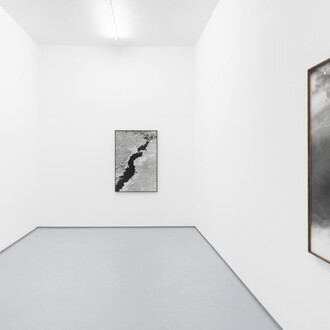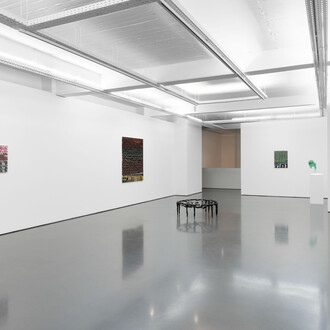Galeria Filomena Soares proudly presents the exhibition Drawing of Helena Almeida (Lisbon, 1934). The exhibition opens on December 4th and will be on view until the 7th of March 2015.
“Drawing”, Helena Almeida
It may surprise the visitor to find photographic works in an exhibition entitled "Drawing". However, Helena Almeida's work often evokes a certain secret, a feeling that arises naturally when looking at a rehearsed, choreographed work, in which a body tries different positions within a given space before the lens and the frame of the photograph. This mystery, although never fully revealed - because it is the viewer that carries it in the contact with the work, sees, in this title, the verbalization of its origin and the artist´s first contact with the material that allows to express herself.
The origin of Helena Almeida's work is precisely that: a drawing which, for its line on the paper, responds to the desire of the artist to create, as well as the urge to express herself in images, without words, an a physical dimension that also demonstrates the immateriality of the artistic expression.
With the world within a scenario or, we may say, within her condition, the artist plays, after the drawing and through a choreography, the gesture of (re)placing her first way of expression, now in photography. We then see a body that responds to the desire to live, before the awareness that life ends; a body that responds to the place where it works and the desire to also escape from it; a body that questions, finally - in photography - which ways it is able to love himself and others: those who photograph her, who looks at her, and carry her, in their hearts, beyond the scope of the studio, of an exhibition, and the physical framework of the image.
By responding to an impulse or to a condition, the "Drawing" always results in a free line -- it will always be, therefore, too restrictive to react to Helena Almeida´s works only by the conditions to which they respond: the awareness of a limit for the representation of a body and its impulses; the necessary frame for those who see it; or the existence of a genre and how it might define her work (or her life).
Although these works may speak to us about what ties us, in a positive manner, to our condition, they also act as an invitation for release: an awareness that our gaze, in contact with others, is a true way to feel, to desire and find a physical expression that meets an immaterial expression. In other words, the expression of our secrets, our intimacy, or a correspondence that we seek when looking at the image of someone who speaks to us, or the body of someone that is looking for us, just the same way as we look at this body. And thus exist in desire and movement; presence and freedom.
Francisco Valente, 2014



















